I stand under the sun facing the bay of Muscat an old postcard in my hand. The photograph was taken from an airplane, for a better
perspective on what the city looked like just a few decades ago.
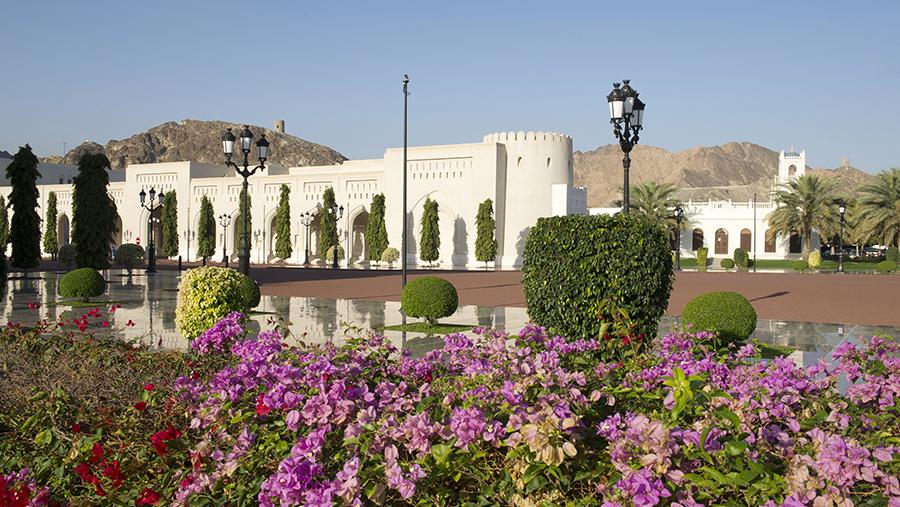
White houses in a few rows of narrow streets nested in a small cove, protected on the seafront by two Portuguese forts, and on its back by rocky hill crops. Not much remains from that time besides the forts, as Oman has embarked on a modernization process since Sultan Qaboos rise to power in 1970. But unlike some of its regional neighbours, boasting impressive new skylines, Muscat has tried to preserve its original identity with a coherent and controlled expansion. As it spilled over to the next cove, Muttrah, then filled Wadi Al Kabir, and now expands onto the Batinah plain, the capital city of the Sultanate remains a relaxed, down to earth and authentic Arabian city.
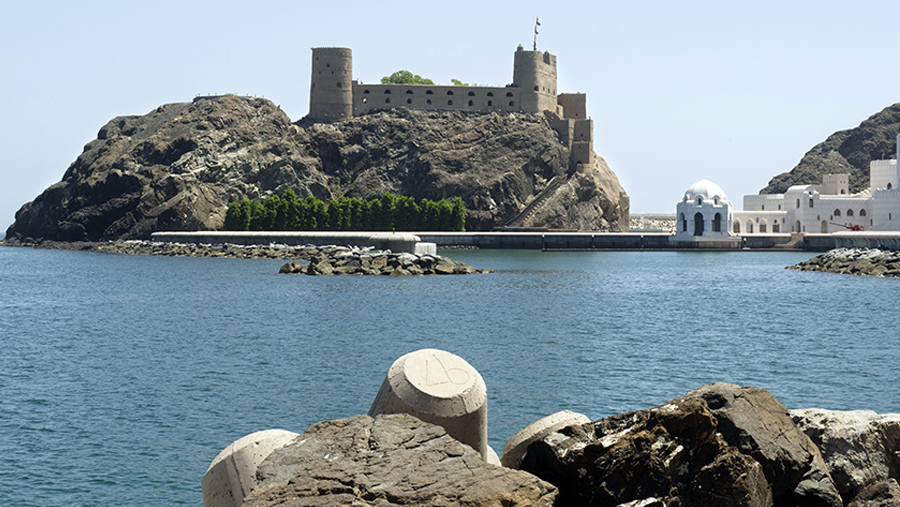
During the day, life hides from the blazing sun, with streets only populated by a mix of a local working crowd, quick to return to air-conditioned spaces, and foreign tourists looking for exotic pictures as they follow their travel guides “to do lists” – Sultan Qaboos Grand Mosque, the Corniche, the forts, the opera, the souk, etc.
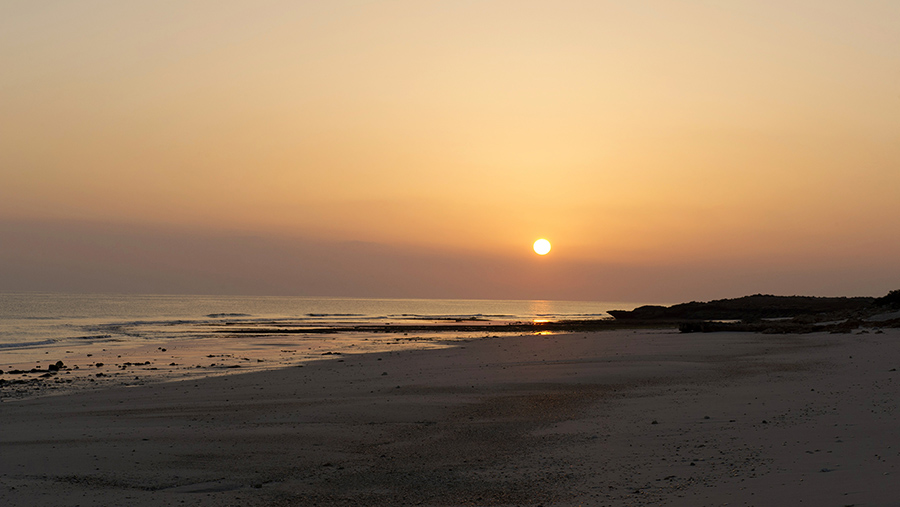
But the true Muscat’s only reveal themselves after dusk, when its inhabitants come out to enjoy the cooler evening temperatures. The streets fill up with people out to; shop, eat, or gather with friends as if the Omani only really lives at night. The beach where I plan on sleeping is packed, with music coming out of cars passing, again and again, hoping to be noticed. Muscat tonight is full of life, full of joy. A mood that will prevail through the late hours of the night, making it close to impossible to find sleep.
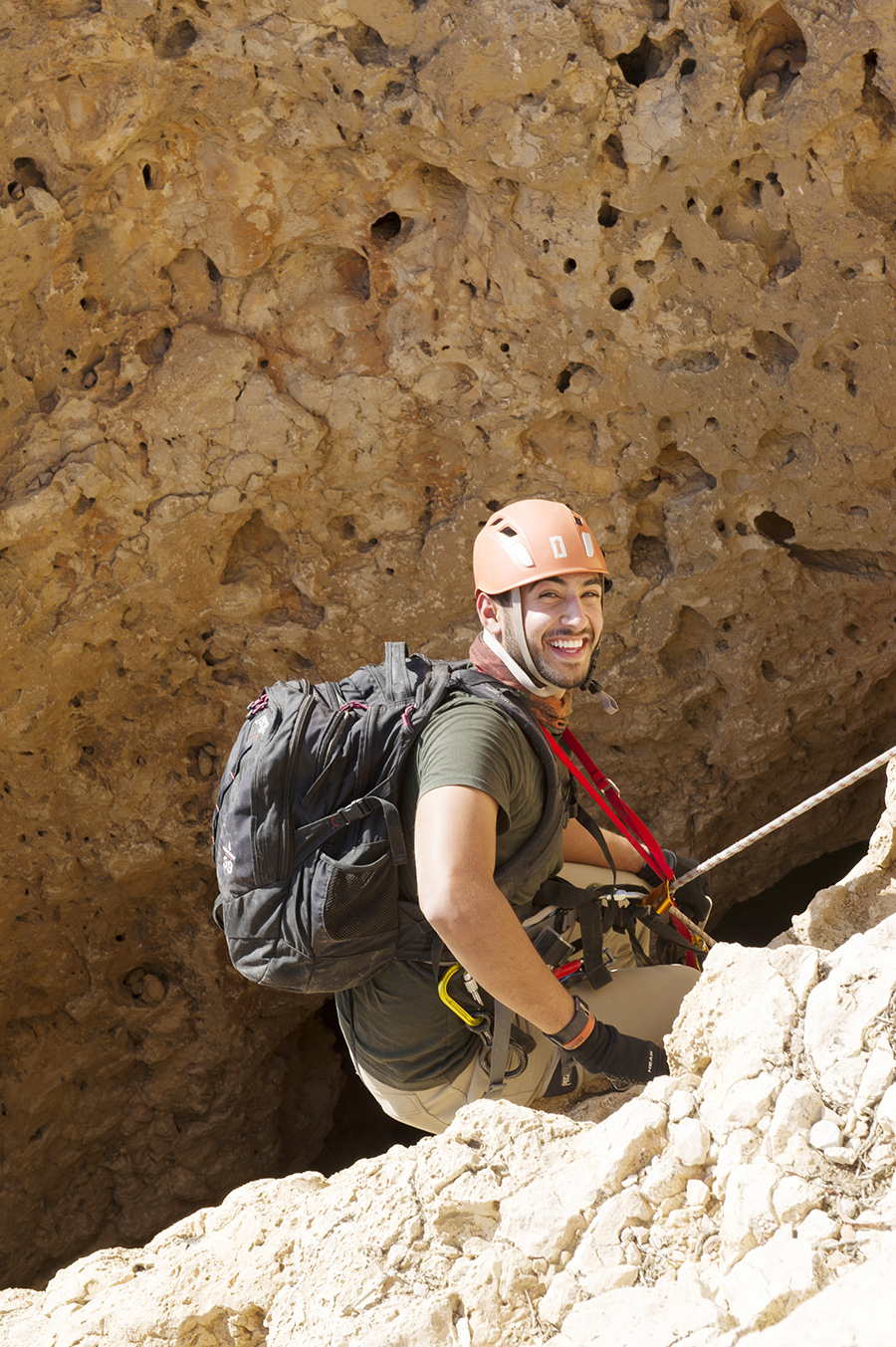
My journey begins a few sleepless hours later driving south along the coast for a short while. In every cove luxurious resorts are being built, taking advantage of stunning locations, transforming the rugged shores once home to fishermen, into tourism hotspots. Further along, still untouched, stands a magnificent rocky bay called Ras al Khiran.
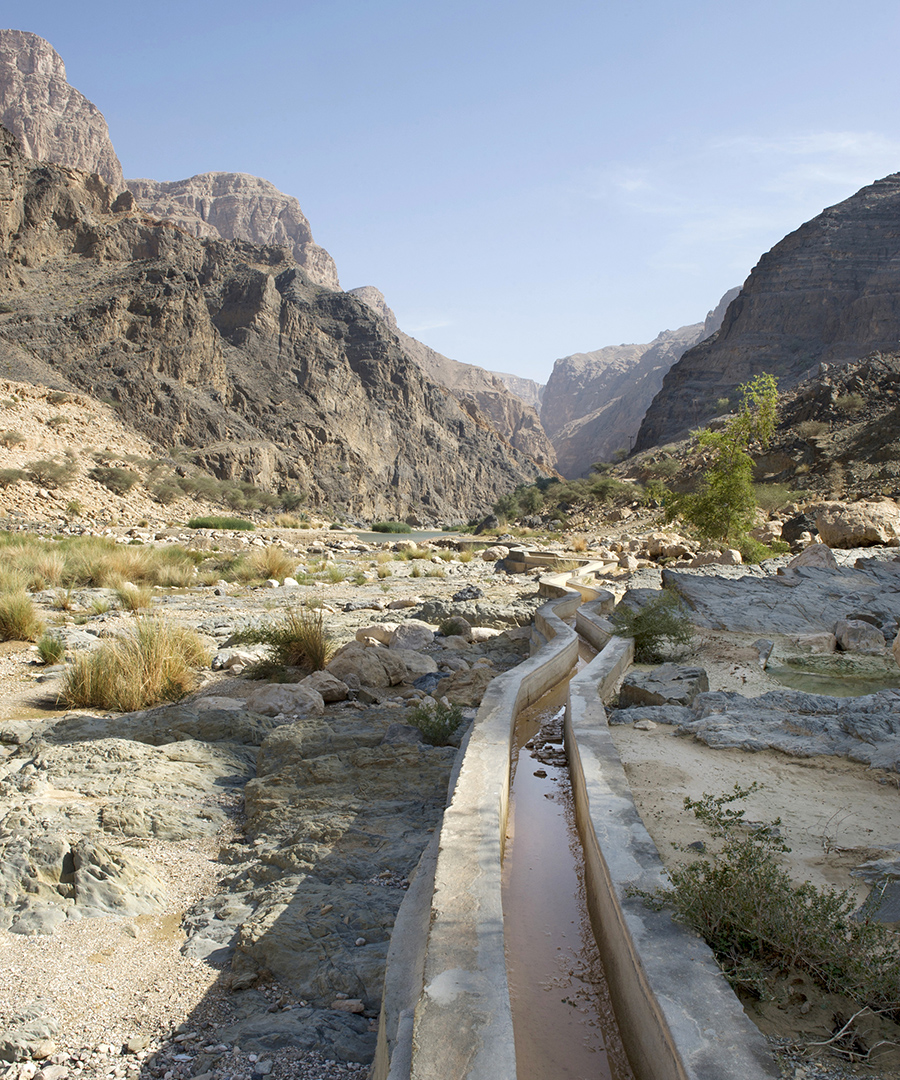
On the sand leading to its emerald waters, hundreds of tiny crabs with one oversized claw run around, only to disappear in the wet sand as you approach. In the warm shallow waters, a multitude of exotic fishes of all colours swims around you unafraid. Foreign workers from a construction camp nearby, just need to bend down to grab a few for their breakfast. A place I could spend the day, but behind me, the bare and imposing Al Hajar mountains are calling.
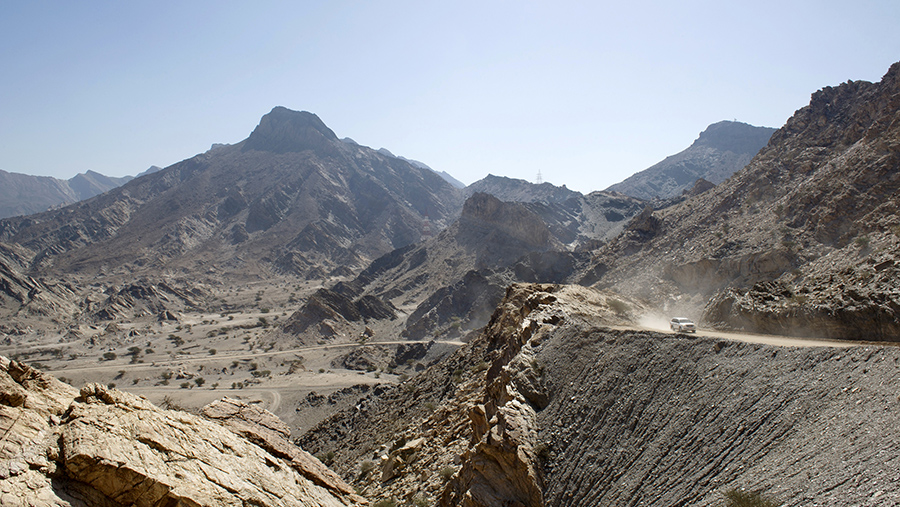
To navigate through the mountains, one needs to follow the Wadih’s. A maze of trails traced on the dry waterways leading you from one valley to the next. At first, the tracks are fairly flat and easy to drive, circumventing around Jebal, revealing the geological richness of the mountains. What looks like bare rocks are actually full of details and information on the local evolution of the earth. Some 90 million years ago, as a result of tectonic shifts between the old Afro/Arabian and Asian plates, the crust and deep mantle of the Indian ocean were pushed upwards. This ongoing obduction and subduction process created a massive structure of various rock formations; ophiolites, metamorphosed ocean sediments, limestones, Hawasina and other exotic sediments all piling up vertically, before eroding rapidly, and falling under sea level again, where shallow marine sediments began to cover it. Then 30 million years ago, during the late Oligocene, a new and still active uplift re-exposed the Rocky Mountains we see and explore today.
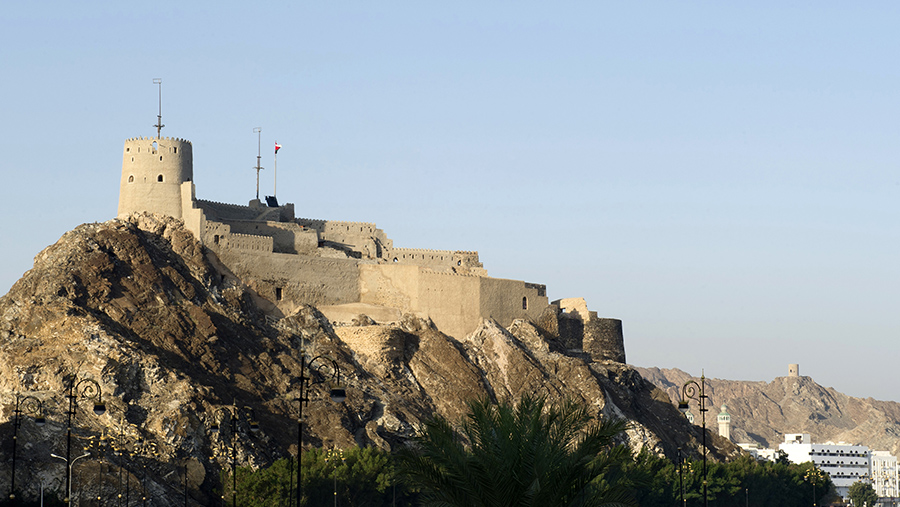
A quick survey of the rocks in Wadi Salil for example shows how violent the overall process must have been. A violence diffused over such an extended period of time that we cannot relate to it, our lives spanning for only the blimp of a second on this particular time scale!
Those million years is the time it took the rare waters to carve out in the limestone those magnificent wadis I am driving through today and will be trekking along tomorrow – Shab, Tiwi, Al Abriyyin – with at the end of them, as they reach the shores, small and sleepy fishing towns, with an unsuspected rich history. Hard to imagine that Quriyat and Qhalat, were once filled with merchant ships unloading their abundant cargos from India and Asia, in exchange for Arabian horses, spices and other precious goods, before it was ransacked and burned to the ground by the Portuguese invaders in 1507. To get a better feel for those past splendors and glories, I spent my first two evenings reading the detailed descriptions of Ibn Battuta, who may have spent his nights on the same white sandy beach I am camping on now, some 650 years ago.
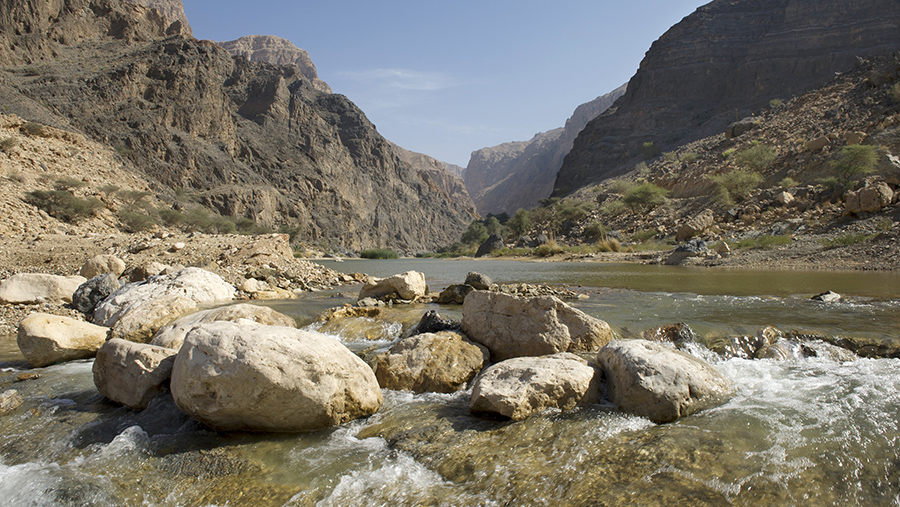
My third day on the trail is when things become interesting as far as true off-roading is concerned. Time to climb up the Salmah plateau. There is a simpler way to reach up, but why settle for easy when you can conquer the challenging? Omani engineers tend to prefer direct solutions. Forget the curving back and forth of traditional European mountain roads, trying to climb gradually. Here we aim straight to the top, regardless of elevation percentages. A rocky, narrow and vertical stretch of dirt on the side of a cliff is what I am now facing, second-guessing my motivations.
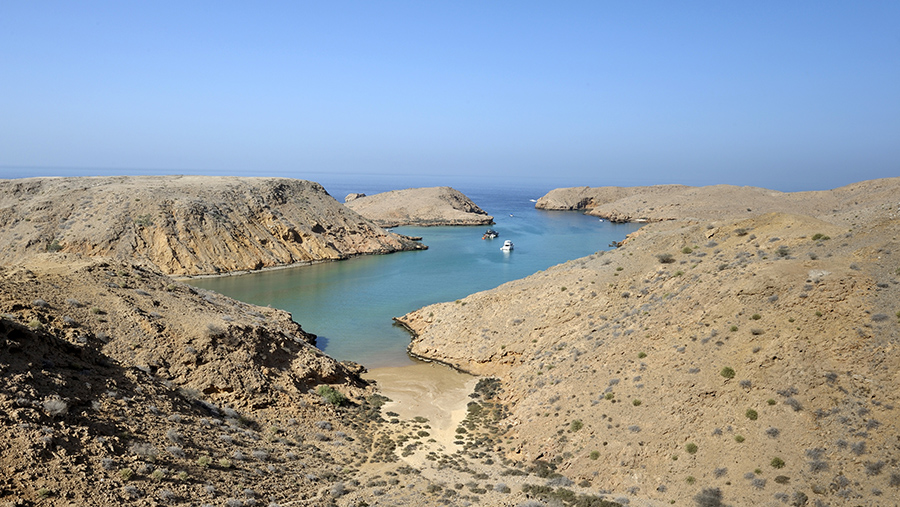
Just as I begin to reconsider there arrives an old Toyota pick-up who’s seen better days. In the front cab a local shepherd, his wife and their small child. On the back platform, two goats and a full tank of water bringing the truck’s suspensions to its knees. We smile at each other, and despite our language limitations, exchange few words regarding the condition of the track.
• Good ?
• Good !
I let him go first to see how he handles the rocks and gulley’s, then follows in pursuit my mind more at ease. But after bouncing his truck around without mercy, almost losing one of the goats in the process, he slows down and then comes to a full stop as we reach about half the climb. He, whom I was counting on for help, could now need mine!

After a moment that seems to last forever, he sticks his arm out his window and waves for me to pass him. This is when you start to sweat. My hands become humid, my heart beats too fast. Afraid to look down, trying to pass as close as possible without touching, hoping that it is enough for me not to fall to certain death.
As I reach his window, here he is on the phone, smiling. His kid is jumping on his laps, laughing.
• Phone signal!! You go!
Interesting spot for an obviously funny conversation with a friend or a relative. I wouldn’t blame them for making fun of me, as I’m probably hiding my stress level very poorly.
The rest of the climb is going smoothly, in a vertical way. And in sharp contrast the top is all flat and bold, baked by a sun without mercy.
In the distance, herds of goats shepherded by women, roam around dispersed bushes for food. Here and there, tucked in small Wadi hamlets populated by a family or two, where, despite the isolation and with close to no resources at all, they have managed to survive that way for millenniums.
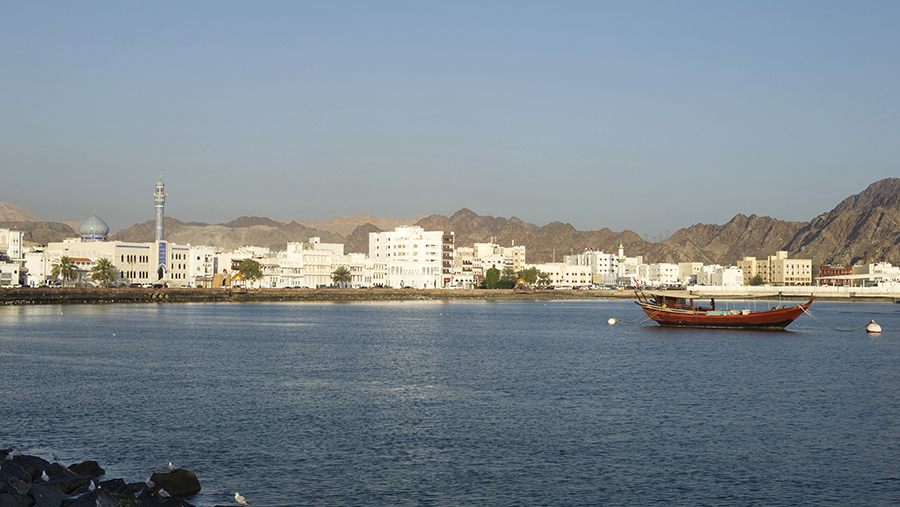
Evidence of that ancient presence are the stunning beehive tombs erected throughout the plateau. Built some 5000 years ago, in the same configuration as the other tombs found throughout the mountains, it shows the interaction all those tribes had between one another, and how closely related the population of those areas where. Sharing the same beliefs, values, customs and rituals despite the distances and natural barriers. As I pause to admire the site, Egyptian vultures fly above in circles, breaking for a moment the overall solitude I came for.
The other attraction on the plateau is the Majlis al Jinn cave. The second largest cave of its kind in the world, discovered in 1983 by Don Davidson and his wife Cheryl Jones. Where, with the necessary experience and the right gears, you can descend and explore a truly unique setting.
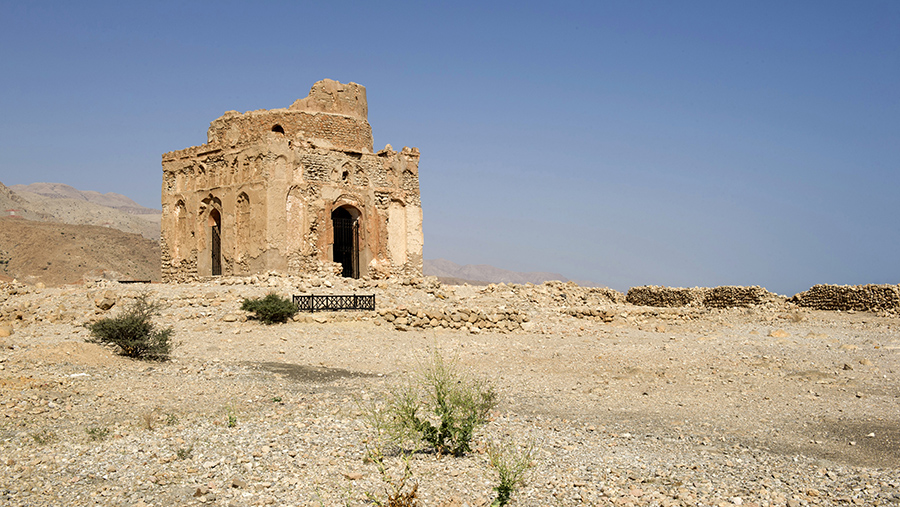
The rest of the drive along the mountainous tracks on my way back down towards Wadi Bani Khalid is a succession of various shades of beiges and browns, layered in tormented rock formations, all stunning for he who takes the time to admire the subtle nuances they exhibit. Later on, guided by the last rays of daylight, I’ll enter a completely new geological world, and look for a campsite in the first sand dunes of the Wahibah sands, my next Omani exploration. ■
Words + Photos by: Paul Robida
Website
www.ostandcurious.com
Instagram
www.instagram.com/paulrobida/ @paulrobida
Twitter
www.twitter.com/LostnCurious @Lostncurious

